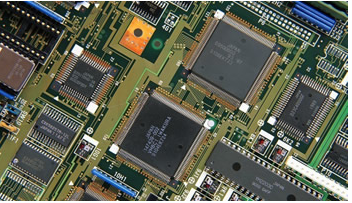SMT chip processing industry commonly used terms
With the development of the SMT chip processing industry, common terms in some industries are also widely circulated. As a beginner, it is very necessary to have an understanding of the special terminology of the electronic processing industry. The terminology can make our communication easier, and the efficiency of learning is greatly improved.
1. Ideal solder joints:
(1) The surface of the solder joint has good wettability, that is, the molten solder should be spread on the surface of the welded metal and form a continuous, uniform and complete solder covering layer, and its contact angle should be less than or equal to 90°;
(2) Apply the correct amount of solder, and the amount of solder should be sufficient;
(3) It has a good welding surface. The surface of the solder joints should be continuous, complete and smooth, but the appearance is not required to be very bright;

(4) For a good solder joint position, the position deviation of the pin or solder end of the component on the pad should be within the specified range.
2. Non-wetting: The contact angle formed by the surface of the welded metal and the solder on the solder joint is greater than 90°.
3. Unsoldering: After soldering, the PCB board is separated from the surface of the pad.
4. Suspension bridge: One end of the component leaves the pad and is in an oblique or upright state.
5. Bridging: The solder connection between two or more solder joints that should not be connected, or the solder joints of the solder joints are connected with adjacent wires.
6. Welding: After welding, electrical isolation sometimes occurs between the welding end or the pin and the pad.
7. Tips: There are burrs in the solder joints, but they are not in contact with other solder joints or conductors.
8. Solder ball: A small ball of solder that adheres to the conductor, solder film or printed circuit board during soldering.
9. Holes: There are cavities of different sizes in the welding place.
10. Position offset: When the welding point deviates from the predetermined position in the longitudinal direction, the rotation direction or the transverse direction in the plane.
11. Visual inspection method: With the aid of an illuminated low-power magnifying glass, inspect the quality of PCBA solder joints with naked eyes.
12. Post-welding inspection: the quality inspection after the PCBA welding process is completed.
13. Rework: Repair process to remove local defects of surface mount components.
14. Mounting inspection: When or after the surface mount components are mounted, the quality inspection is carried out on whether there is any missing, misplaced, mis-mounted, damaged, etc.
Classification and use of smt patch processing factory fixtures
In the production process of smt patch processing plants, some fixing devices are often used, so today I will briefly introduce the classification and use of fixing devices:
Classification of fixtures: fixtures can be divided into three types of process assembly fixtures, project test fixtures and circuit board test fixtures. Among them, the process assembly fixture includes assembly fixtures, welding fixtures, disassembly fixtures, distribution fixtures, irradiation fixtures, adjustment fixtures and cutting fixtures. Project test fixtures include life test fixtures, packaging test fixtures, environmental test fixtures, optical test fixtures, shielding test fixtures, sound insulation test fixtures, etc.; circuit board test fixtures mainly include ICT test fixtures, FCT functional fixtures, SMT furnace fixtures, and BGA test fixtures Wait.
The use of SMT fixtures: fixtures are produced for commercial needs, including mechanical fixtures, woodworking fixtures, SMT welding fixtures, jewelry fixtures and other fields. Certain types of fixtures are also called "molds" or "auxiliary tools", and their main purpose is to replicate specific parts with repeatability and accuracy. Many types of fixtures can be customized, and some can increase productivity or make work more precise.